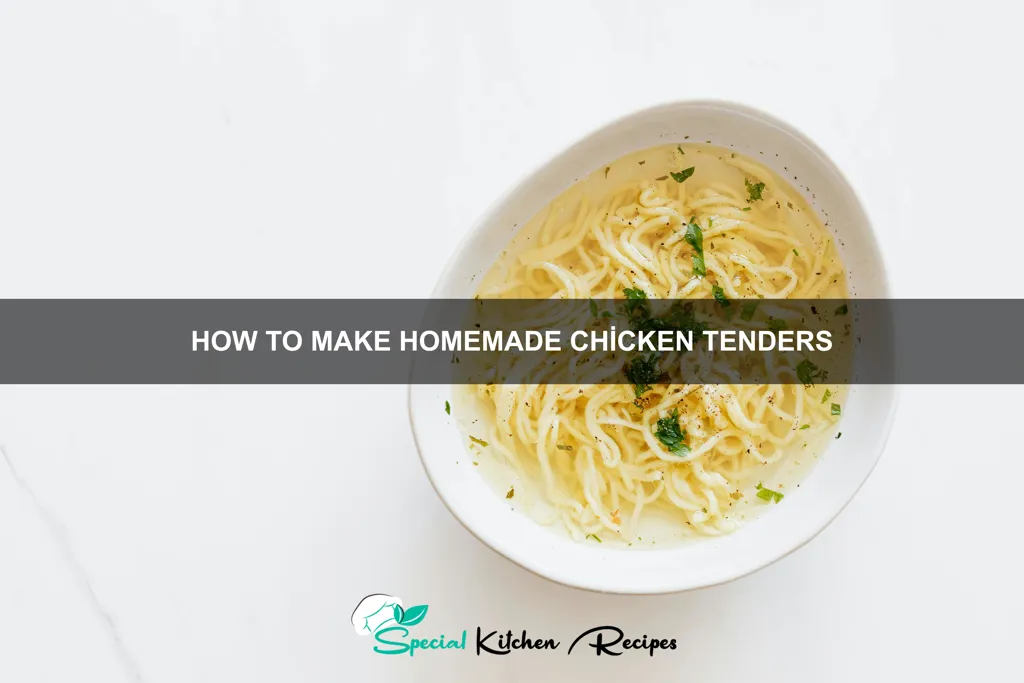Chicken tenders, those crispy, juicy strips of white meat, are a modern culinary marvel, enjoying immense popularity across the globe. While pinpointing their exact origin is difficult, their rise to fame is relatively recent. Unlike dishes with centuries of history, chicken tenders emerged as a convenient and appealing food item in the late 20th century, likely gaining traction in restaurants and fast-food chains before making their way into home kitchens. Their convenience and adaptability to various seasonings and dipping sauces contributed to their quick ascension in popularity. It’s estimated that the US alone consumes billions of pounds of chicken tenders annually, highlighting their place as a staple in American cuisine, and increasingly, worldwide.
The popularity of chicken tenders is inextricably linked to the broader evolution of fast food and the increasing demand for convenient, readily available protein sources. Their preparation, using readily available chicken breast, lends itself to mass production, making them a cost-effective option for both restaurants and home cooks. This ease of preparation also allows for creative culinary exploration; from classic breading and frying to baked or air-fried healthier versions, the versatility of chicken tenders is a key reason for their enduring appeal. Interestingly, the popularity of chicken tenders has also spurred innovation in dipping sauces, with a wide range of flavors, from classic honey mustard to more adventurous options, now readily available.
Beyond their convenience, chicken tenders hold cultural significance as a quintessential example of American comfort food. They are frequently featured on children’s menus, embraced at sporting events, and serve as a familiar dish in casual settings. This widespread appeal transcends geographical and cultural boundaries, appearing on menus from family-friendly restaurants to upscale establishments, often with creative twists and gourmet adaptations. The simple act of making chicken tenders at home allows individuals to recreate this beloved comfort food, customizing the flavor profile to their personal preferences, and potentially passing on culinary traditions to future generations. This recipe aims to guide you through creating the perfect homemade chicken tenders, allowing you to enjoy this globally cherished dish from the comfort of your own kitchen.
Ingredients and Measurements
Creating delicious homemade chicken tenders starts with selecting high-quality ingredients. The precise measurements below will yield approximately 1.5 pounds of cooked chicken tenders, enough for 2-3 servings. Adjust quantities as needed for larger or smaller batches.
Chicken Breast: 1.5 pounds boneless, skinless chicken breasts. Choose breasts that are relatively uniform in size for even cooking. If you have larger breasts, you can butterfly them (slice them horizontally almost all the way through) to create thinner, more evenly sized pieces. This will ensure they cook through at the same rate. Avoid using chicken that’s been previously frozen and thawed, as it may be drier.
All-Purpose Flour: 1 cup. Using all-purpose flour provides a classic, crispy coating. You can substitute a portion (up to 1/4 cup) with cornstarch for an extra-crisp texture, but be aware that this will make the breading slightly more delicate.
Eggs: 2 large eggs. Make sure your eggs are at room temperature for optimal mixing and a smoother batter. Room temperature eggs blend more easily with the other wet ingredients, resulting in a more uniform coating.
Breadcrumbs: 1 1/2 cups panko breadcrumbs. Panko breadcrumbs create a lighter, crispier coating than regular breadcrumbs. For a bolder flavor, you can add 1/4 cup grated Parmesan cheese to the breadcrumbs. You can also experiment with seasoned breadcrumbs for added depth of flavor.
Seasoning: This is where you can get creative! Here’s a basic suggestion, but feel free to adjust to your preferences.
- 1 teaspoon salt
- 1/2 teaspoon black pepper
- 1/2 teaspoon paprika
- 1/4 teaspoon garlic powder
- 1/4 teaspoon onion powder
Adjust the seasoning to your taste. Consider adding cayenne pepper for a little heat, or Italian seasoning for a more herbaceous flavor profile.
Optional additions: For even more flavor, consider adding a tablespoon or two of your favorite hot sauce to the egg wash, or incorporating some finely chopped herbs (like parsley or chives) into the breadcrumbs.
Important Note: Measure your ingredients accurately, especially the flour and breadcrumbs. Too much flour can result in dense, heavy tenders, while too little will result in a thin, fragile coating. The measurements provided are recommendations, feel free to experiment once you’ve mastered the basic recipe.
Equipment and Utensils
Making delicious homemade chicken tenders requires the right tools. Having everything prepared beforehand will streamline the process and ensure a smooth cooking experience. Below is a list of the essential equipment and utensils you’ll need:
First, you’ll need a large bowl (at least 3-quart capacity) for marinating the chicken. This allows for ample space to fully coat the chicken pieces in the marinade. A smaller bowl will lead to uneven marinating and potentially dry chicken.
Next, you’ll need three shallow dishes (approximately 9×13 inches). These are crucial for the breading process. One dish will hold the seasoned flour, the second will hold the beaten eggs (about 2 large eggs, lightly whisked), and the third will hold the breadcrumbs. Using shallow dishes allows for even coating and prevents excess breading from accumulating on the chicken.
A sturdy whisk is essential for whisking the eggs thoroughly to ensure a smooth, consistent coating. A fork can be used, but a whisk produces a lighter, airier batter, leading to crispier tenders. Consider using a balloon whisk for optimal results.
For cutting the chicken, a sharp chef’s knife (approximately 8 inches) is recommended. A dull knife will tear the chicken, resulting in uneven cooking and potentially dry meat. Always use caution when handling knives and ensure you have a stable cutting board.
You will also need tongs or two forks for carefully handling the breaded chicken during the frying process. This prevents sticking and ensures even cooking. Avoid using your hands as much as possible to maintain hygiene and prevent transferring excess breading to the oil.
Finally, you will need a large skillet or deep fryer for cooking. A cast iron skillet is ideal for even heat distribution, leading to perfectly crispy chicken tenders. If using a deep fryer, ensure you follow the manufacturer’s instructions for safe operation. You’ll also need a deep-fry thermometer to monitor the oil temperature (ideally between 350-375°F or 175-190°C) for consistent results. Never leave hot oil unattended.
Optional but helpful: A meat thermometer will ensure the chicken is cooked thoroughly to an internal temperature of 165°F (74°C). Paper towels are also useful for draining excess oil from the cooked chicken tenders.
Chicken Preparation (Tenderizing and Cutting)
Selecting the right chicken is crucial for perfectly tender chicken tenders. Aim for boneless, skinless chicken breasts. About 1.5 to 2 pounds of chicken breast will yield approximately 12-16 chicken tenders, depending on the size of the breasts. You can adjust the quantity based on your recipe and the number of servings.
Before tenderizing, ensure your chicken breasts are completely thawed. Frozen chicken will be difficult to cut and tenderize evenly. Once thawed, pat the chicken breasts dry with paper towels. Removing excess moisture is vital for proper browning and crisping during cooking.
Now, let’s tenderize the chicken. There are several ways to achieve this: using a meat mallet, a rolling pin, or even a specialized tenderizer tool. For even tenderization, place the chicken breast between two sheets of plastic wrap. This prevents the meat from tearing and splattering while protecting your work surface. Using a meat mallet, gently pound the chicken to a uniform thickness of about ⅛ to ¼ inch. Avoid pounding too hard, as this can result in tough, shredded chicken. The goal is to flatten and slightly thin the chicken, making it cook more quickly and evenly.
Once tenderized, it’s time to cut the chicken into tenders. Visually locate the natural grain of the chicken breast. Cutting *against* the grain is key to achieving tender chicken tenders. This means slicing perpendicular to the muscle fibers. Cut the chicken into strips approximately 1 to 1 ½ inches wide and 3 to 4 inches long. The size can be adjusted to your preference, but maintaining a relatively consistent size ensures even cooking.
After cutting, inspect each tender to ensure there are no thick or thin spots remaining. If some areas are thicker, you may need to gently pound them again to ensure even cooking. Finally, place the cut chicken tenders on a plate or baking sheet and proceed to the next step in your recipe, such as breading or marinating.
Professional Tip: For exceptionally tender chicken, consider marinating the tenders for at least 30 minutes before breading and cooking. A simple marinade of buttermilk, lemon juice, and spices will do wonders!
Breading Station Setup
Setting up your breading station properly is crucial for achieving perfectly coated, crispy chicken tenders. A disorganized station leads to messy breading and inconsistent results. We recommend a three-bowl or three-tray system, ensuring a smooth workflow and preventing cross-contamination.
Bowl/Tray 1: Flour Mixture. In a shallow, wide dish (approximately 12 inches in diameter), combine 1 ½ cups all-purpose flour with 1 teaspoon salt, ½ teaspoon black pepper, and ½ teaspoon paprika (optional, for added color and flavor). Whisk thoroughly to eliminate any lumps. The flour should be evenly distributed and light. A larger dish allows for easier coating of the chicken without overcrowding.
Bowl/Tray 2: Egg Wash. In a separate shallow dish of similar size, whisk together 2 large eggs with 2 tablespoons of milk or water. The addition of milk or water thins the egg wash, allowing for better adherence of the breading. Ensure the eggs are thoroughly combined for a consistent coating. A fork works perfectly for whisking.
Bowl/Tray 3: Breading Mixture. In another shallow dish, prepare your breading mixture. For classic breading, use 1 ½ cups panko breadcrumbs. Panko breadcrumbs offer a lighter, crispier texture compared to regular breadcrumbs. You can also experiment with seasoned breadcrumbs or add other elements like grated parmesan cheese (¼ cup) or finely chopped herbs for extra flavor. Again, a larger dish is recommended.
Organization is Key: Arrange your three stations in a linear fashion for efficient breading. This minimizes the amount of movement needed while breading each tender. Keep a clean, dry towel or paper towels nearby to wipe your hands as needed. This prevents excess moisture from transferring to the breading, which can result in soggy tenders.
Optional additions: For extra flavor and a unique twist, consider adding spices directly to the flour or breading mixture. Garlic powder, onion powder, cayenne pepper, or even a blend of Italian herbs can elevate the taste of your chicken tenders. Remember to adjust the seasoning according to your preference.
Pro Tip: Don’t overcrowd the chicken in any of the stations. Overcrowding will result in uneven coating and potentially soggy tenders. Work in batches to ensure each piece of chicken receives proper coverage.
Breading the Chicken Tenders
Now that your chicken tenders are prepped and ready, it’s time to give them that delicious, crispy breading. This process involves three distinct steps: dredging in flour, dipping in egg wash, and finally, coating in breadcrumbs. Proper execution of each step is crucial for achieving perfectly golden and crunchy tenders.
Step 1: The Flour Dredge. Begin by placing 1 ½ cups of all-purpose flour in a shallow dish. Season the flour generously with 1 teaspoon of salt, ½ teaspoon of black pepper, and ½ teaspoon of paprika. You can also add other spices here to suit your taste, such as garlic powder, onion powder, or cayenne pepper. Ensure the flour is evenly seasoned to guarantee consistent flavor throughout your tenders.
Next, carefully dredge each chicken tender in the seasoned flour, ensuring it’s fully coated. Press gently to help the flour adhere. Avoid overcrowding the dish; work in batches if necessary to maintain a good coating. Gently shake off any excess flour before proceeding to the next step. This prevents a thick, clumpy breading.
Step 2: The Egg Wash. In a separate shallow dish, whisk together 2 large eggs with 2 tablespoons of milk or water. The addition of milk or water helps create a thinner, more easily spreadable wash, which improves the adhesion of the breadcrumbs. Make sure the eggs are thoroughly whisked to create a smooth, consistent mixture.
Dip each flour-coated chicken tender into the egg wash, allowing any excess to drip off. Don’t let the tenders soak in the egg wash for too long; a quick dip is sufficient. This prevents the breading from becoming soggy.
Step 3: The Breadcrumb Coating. In a third shallow dish, place 1 ½ cups of breadcrumbs. You can use panko breadcrumbs for an extra-crispy texture, or regular breadcrumbs for a more traditional result. You can also add your favorite seasonings to the breadcrumbs, such as parmesan cheese, herbs, or spices. Using quality breadcrumbs is essential for a good result.
Finally, coat each egg-washed tender thoroughly in the breadcrumbs, pressing gently to ensure good adhesion. Again, avoid overcrowding the dish. Once all the chicken tenders are breaded, you are ready to fry or bake them to perfection! Remember to work quickly and efficiently throughout the breading process to prevent the chicken from becoming too wet.
Cooking Method (Frying, Baking, or Air Frying)
Choosing the right cooking method for your chicken tenders significantly impacts their texture and flavor. Here’s a breakdown of three popular options: frying, baking, and air frying.
Frying: This method delivers the crispiest, most flavorful results. For frying, you’ll need about 2 cups of vegetable oil (or your preferred frying oil) in a heavy-bottomed pot or deep fryer. Heat the oil to 350°F (175°C). Use a thermometer to ensure accurate temperature; oil that’s too cool will result in greasy tenders, while oil that’s too hot will burn them. Carefully place the breaded chicken tenders into the hot oil, ensuring not to overcrowd the pot. Fry in batches for about 6-8 minutes, flipping halfway through, until golden brown and cooked through (internal temperature of 165°F/74°C). Remove with a slotted spoon and drain on paper towels to absorb excess oil. Avoid overcrowding the pan, which will lower the oil temperature and result in soggy tenders.
Baking: Baking is a healthier alternative to frying, offering a slightly less crispy but still delicious result. Preheat your oven to 400°F (200°C). Line a baking sheet with parchment paper for easy cleanup. Arrange the breaded chicken tenders in a single layer, ensuring they aren’t touching. Bake for 20-25 minutes, flipping halfway through, until golden brown and cooked through (internal temperature of 165°F/74°C). Baking times may vary depending on your oven and the thickness of the tenders. Using a meat thermometer is crucial to ensure they are fully cooked.
Air Frying: Air frying offers a happy medium between frying and baking. It delivers crispy results with less oil. Preheat your air fryer to 400°F (200°C). Arrange the breaded chicken tenders in a single layer in the air fryer basket, ensuring they aren’t overcrowded. Air fry for 12-15 minutes, shaking the basket halfway through, until golden brown and cooked through (internal temperature of 165°F/74°C). Don’t overcrowd the air fryer basket; this will hinder the air circulation and result in uneven cooking. Cooking times may vary depending on your air fryer model.
Regardless of the method you choose, always use a meat thermometer to ensure the chicken reaches an internal temperature of 165°F (74°C) for food safety. This is the only way to guarantee that the chicken is fully cooked and safe to eat.
Recommendations
For the best results when making homemade chicken tenders, ensure your chicken breast is thoroughly dried before breading. Excess moisture will prevent the breading from adhering properly and result in soggy tenders. Also, don’t overcrowd the pan when frying; this will lower the oil temperature and lead to greasy tenders. Work in batches to maintain a consistent cooking temperature for crispy results. Finally, adjust cooking time based on the thickness of your chicken; thicker tenders will require slightly longer cooking times to ensure they are cooked through.
These homemade chicken tenders are a delicious and versatile meal option. They are fantastic served hot and straight from the fryer. Serving suggestions include dipping sauces such as honey mustard, BBQ sauce, ranch dressing, or even a spicy sriracha mayo. They also pair well with classic sides like french fries, coleslaw, potato salad, or a fresh green salad. For a complete meal, consider serving them over a bed of rice or alongside roasted vegetables.
Storage: Leftover chicken tenders can be stored in an airtight container in the refrigerator for up to 3 days. To reheat, you can bake them in the oven at 350°F (175°C) for about 10-15 minutes, or until heated through. Freezing is also an option; store them in a freezer-safe bag or container for up to 3 months. Thaw overnight in the refrigerator before reheating.
Nutritional Information (per tender, approximate values will vary based on ingredients and portion size): Calories: approximately 150-200; Protein: 15-20g; Fat: 8-12g; Carbohydrates: 10-15g. Note: These values are estimates and may vary depending on the specific ingredients used, portion size, and cooking method. For more precise nutritional information, use a nutrition calculator and input your specific recipe ingredients and measurements.
Complementary Dishes: To enhance your meal, consider serving your homemade chicken tenders with a side of creamy mashed potatoes, a vibrant and refreshing cucumber salad, or a zesty lemon-herb pasta salad. A simple side of steamed green beans or asparagus also complements the richness of the chicken tenders beautifully. Experiment with different flavor combinations to create your perfect meal!





